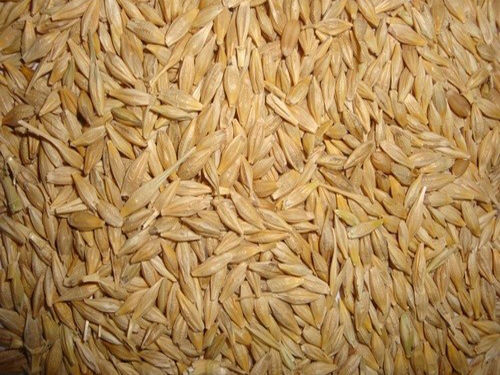Barley Grains
Modern agricultural farms as well as the best farming practices have helped us to provide the excellent quality range of Barley Grains. The offered grains are precisely processed as well as packed under safe and hygienic environment conditions. We have been using ground-breaking and modern methodology to provide the best class range of solutions to the clients. Our skilled team of quality inspectors tests the array according to the global quality standards to make sure maximum germination and yield. In addition to this, they are available at very economical prices within the provided time restriction.
Features:
- Natural taste and purity
- Hygienically processed
- High nutritional properties
- Best medicinal benefits
Technical Specifications:
| Purity | 99%(Min) |
| Foreign Matter | 1% (Max) |
| Test Weight | 63 Kg/Hl |
| Moisture | 14% (Max) |
| Crude Protein | 9% (Min) |
| Fiber | 8% (Min) |
| Fat | 2% (Min) |
| Damage & Broken | 3% (Max) |
| Origin | Indian |
| Packing | In strong pp bags 30/50 kg
packing net/gross |
| 1fcl/20ft | 20mt/1fcl |
| I.T.C. H.S. Code | 100300 |
| Used | Feed Grade & Bird Feed |
Superior Quality and PurityOur barley grains offer a 99% purity level and are meticulously cleaned to ensure negligible impurities. Admixture and ash content are limited to 1% and 1.5% respectively, providing customers with a high-quality product that meets rigorous industry standards. This attention to detail makes our offering especially suitable for food, brewing, and feed purposes where consistency is key.
Versatile Applications and StorageBarley grains can be used in brewing, malting, animal feed, and as a versatile food ingredient. Their mild aroma and natural taste enhance a wide variety of products. The grains are delivered in robust PP or jute bags, making storage and transportation efficient. Storing them in a cool, dry place ensures a maximum shelf life of up to 12 months, maintaining their nutritional and sensory qualities.
FAQs of Barley Grains:
Q: How should I store barley grains for maximum freshness and shelf life?
A: Barley grains should be stored in a cool and dry place, ideally in their original PP or jute packaging, to preserve their quality and ensure the full 12-month shelf life. Avoid exposure to moisture and direct sunlight.
Q: What are the typical uses for these barley grains?
A: These barley grains are suitable for malt production, brewing, cattle feed, and as a food ingredient. Their natural, mild, and nutty flavor complements a variety of culinary and industrial applications.
Q: When is the crop harvested and how is quality maintained?
A: Our barley grains are sourced from the current crop year, guaranteeing freshness. Rigorous cleaning and sun-drying processes, along with careful sorting, ensure the grains remain 99% pure and fully matured.
Q: Where are these barley grains sourced and processed?
A: These grains are cultivated, processed, and packed in India by reputable distributors, exporters, manufacturers, and suppliers, ensuring compliance with stringent quality standards.
Q: What measures are in place to minimize foreign matter and impurities?
A: The barley is cleaned and graded so foreign matter does not exceed 1% and broken grains less than 2%. Advanced sorting methods and inspections are employed to ensure negligible impurities and consistent quality.
Q: How is the natural flavor and texture of the barley preserved?
A: The grains are processed naturally and dried in the sun, preserving their mild fragrance, natural taste, and granular texture. No artificial additives are used, maintaining a wholesome product.
Q: What benefits do these barley grains offer over other types?
A: With high purity, low moisture (max 12%), and strict grading, these barley grains provide excellent nutritional value, reliable performance in brewing and feeding, and versatility for many uses, all backed by a robust supply chain from India.
